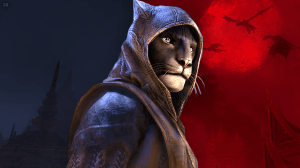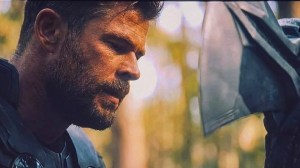Earlier this year, before the WGA strike and the SAG-AFTRA strike, it was reported that Stephenie Meyer’s beloved Twilight Saga series of books was being developed for television. On some level, the news wasn’t a huge surprise. After all, Twilight was a pop culture phenomenon when it was released in 2008 and propelled its stars Robert Pattinson, Taylor Lautner, and Kristen Stewart into superstardom. There hasn’t been much news in terms of the in-development series, but that itself is a testament to just how much of a legacy the franchise has.
Videos by ComicBook.com
But while the films were a whole cultural moment and wildly successful at the box office, as is the case with any franchise, opinions vary on each of the films in the five-film series. None of the films were critical successes — each of the five films is “rotten” on Rotten Tomatoes, but fans have been kinder. Now, with fall upon us and the 15th anniversary of the first film coming up on November 21st, we’re looking back at the films to come up with our own ranking of which installment is the best and which one is… not.
Read on for our ranking of all the films in the Twilight Saga and be sure to let us know your thoughts in the comment section.
5. The Twilight Saga: Eclipse (2010)
The third film in the series, Eclipse comes in last on this list simply because it is the one film in the series that feels like it’s filler, simply serving to tie up a few loose ends and attempt to fully establish the love triangle between Bella, Edward and Jacob with something approaching tension. The film sees Bella struggling to choose between Jacob and Edward, but also sees the sinister vampire Victoria (Bryce Dallas Howard) coming back to get revenge on the Cullens with a plan to kill Bella, leading to an uneasy alliance between the wolves and the Cullens.
While the film is largely filler that isn’t to say that the film is entirely without some merit. It delivers the origin stories of Jasper and Rosalie, which are nice additions, but there’s just a lot of weird and unconvincing moments in the film — particularly when it comes to Bella’s situation and her relationship with Edward. The best thing the film does is the pair engaged, thus setting up for the two-film finale.
4. The Twilight Saga: New Moon (2009)
The second film in the series, New Moon sees Bella depressed that Edward and the Cullens has left Forks (which happens after a mishap at her birthday party involving a paper cut), which opens the door for her friendship with Jacob, who she learns is a werewolf. It also sees the introduction of Victoria, and also sees a serious of miscommunications that makes Edward think Bella has ended her own life, which prompts him to go to the Volturi to ask to be destroyed.
The film does a surprising amount of heavy lifting. It fully introduces and fleshes out Jacob as a character and gives Bella some solid conflict. But the film also has a pretty significant lack of Cullens for most of the film which is a big gap in a story that is arguably about vampires. The Volturi stuff is also a little heavy-handed and awkward at times. As a sequel, it’s okay, but in the grand scheme of the full series, it’s a solid fourth position.
3. The Twilight Saga: Breaking Dawn Part 1 (2011)
Okay, technically the line between Breaking Dawn Part 1 and its direct sequel Breaking Dawn Part 2 is so fine it could almost be a tie, but the big tipping point here is that Part 1 has more filler. In Part 1, Bella and Edward get married and Bella ends up pregnant, giving birth to the half human, half vampire hybrid child Renesmee.
This might be the closest thing to a horror movie in the franchise, with Bella’s disturbing pregnancy, delivery, and how she’s turned into a vampire, but there are also some significant emotional stakes in the film, which elevates it over the two other films in this list to this point. The real lack here is that the film’s pacing is a little slow and tedious given that it must set up the major plot elements in the series for final delivery in the sequel. The whole bit about Jacob imprinting on baby Renesmee is also just… a lot. Sure, it’s in the books, but it’s still a lot.
2. The Twilight Saga: Breaking Dawn Part 2 (2012)
The finale in the saga, Breaking Dawn Part 2 brings it all together and follows Bella into her new life as a vampire and everything that entails, as well as as a new mother all while having to fight to protect her hybrid child, something that culminates in an epic final battle between the Volturi and the Cullens and their allies.
There’s quite a bit here that’s actually pretty cool. First, the film’s score might be the best of the franchise, but there’s also a really great fight scene — even if it does end up simply being a vision and not something that actually happens. While it’s a bit of “cheap trick” of sorts, it definitely ups the action and the emotional stakes in the film, which draws some pretty interesting performances from all its main cast. There’s some sketchy CGI but given the scope of the books and just how bonkers some of this story is overall, Breaking Dawn Part Two actually pulls things together surprisingly well, making it the second best of the series.
1. Twilight
Teenage girl meets eternally teen vampire and a complicated romance begins. It’s not the best of stories, but it’s a story that captivated readers — and the Catherine Hardwicke-directed Twilight captured that story well. What makes Twilight the best of the series is probably how it brought the characters from page to screen in a way that felt very faithful to the books and also gave the story a bit of depth and drama that really translated everything in a big way. While the film has some difficulties — lots of blue filter, Stewart’s very subdued emotions in her acting — even 15 years later Twilight still works as an escapist romance. It’s also the best adaptation from the books of the entire series — and frankly, one of the better screen-to-film adaptations overall. That might be why it remains a pretty popular film all these years later and will make it a hard act to follow for any future adaptation of Meyer’s work.








